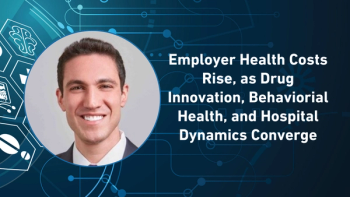
- Pharmaceutical Commerce - July/August 2011
Book Review
Pharmaceutical Anti-Counterfeiting: Combating the Real Danger from Fake Drugs
The US pharmaceutical industry remains in something of a lull regarding counterfeit drugs. After a flurry of activity in the early years of the past decade, abetted by an FDA push to establish a reliable anti-counterfeiting and anti-diversion program, various states tightened their licensure and regulation of wholesale distributors, bringing some order to what had been a near Wild West of product diversion. The state-level campaign culminated with a drive by the California Board of Pharmacy to mandate a fully built out track-and-trace system—which was postponed, as the state’s continued financial difficulties arose in 2008, to the 2015-17 timeframe. Meanwhile, nearly everyone concerned with preventing counterfeit drugs from circulating is looking to Washington and the FDA to establish a national program. A parallel effort, with more or less the same time frame, is occurring in Europe, and in most parts of the developing world—where counterfeiting rises to a national public health crisis in some cases—some lower-cost workable solutions are being deployed.
Despite intense effort by some industry leaders, and by some technology vendors, no single method or process for protecting against counterfeits is in the offing. But in fact that fits with one of the fundamental tenets of anti-counterfeiting—that multiple layers of defense are needed, and that the entire supply chain needs to cooperate in a collaborative manner to secure the drug supply.
In that context, Pharmaceutical Anti-Counterfeiting: Combating the Real Danger from Fake Drugs (Wiley; www.wiley.com) provides a useful service: it surveys a considerable part of the technology scene, enabling the reader to get an overview of the dozens of techniques and practices that are available, from RFID tags to security inks to analytical chemistry. Its 402 densely written pages cover the spectrum of options well.
Authored by Marc Davison, a former executive at a leading anti-counterfeiting technology and consulting business (SICPA), Pharmaceutical Anti-Counterfeiting is valuable if only for putting a context around the two main approaches to anti-counterfeiting: on-dose or on-package security features; and track-and-trace (aka “pedigree”) systems. Both have value; both have limitations and both, ultimately, may be necessary to secure the supply chain. The former approach is suited to individual manufacturers who have the desire (and resources) to monitor their own products in distribution channels or to provide security to patients; the latter pools all manufacturers’ and distributors’ efforts into a collaborative process that secures supply chains for all participants. Anti-anti-counterfeiting proponents (if such a term can be used) claim that a “normal channel of distribution” exists that covers most if not all pathways of drugs from maker to consumer—but the many exceptions to this channel highlight the risks we continue to suffer.
Articles in this issue
about 14 years ago
Pharma IT is going to the cloudsover 14 years ago
Express Scripts Tackles Medication Adherence With SAS Analyticsover 14 years ago
New Labeling Laws Encouraging Innovative Ways to Update Rx Drug Infoover 14 years ago
Cardinal Health Opens Collaboration Center for Radiopharmaceuticalsover 14 years ago
FDA: Pathway to Global Product Safety and QualityNewsletter
Stay ahead in the life sciences industry with Pharmaceutical Commerce, the latest news, trends, and strategies in drug distribution, commercialization, and market access.



